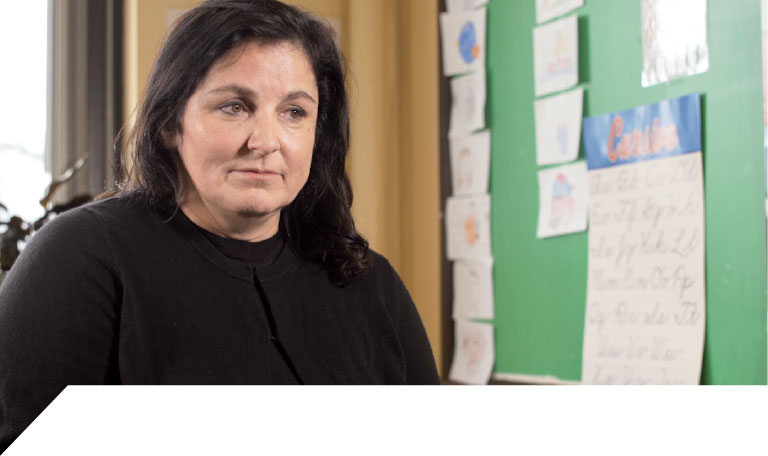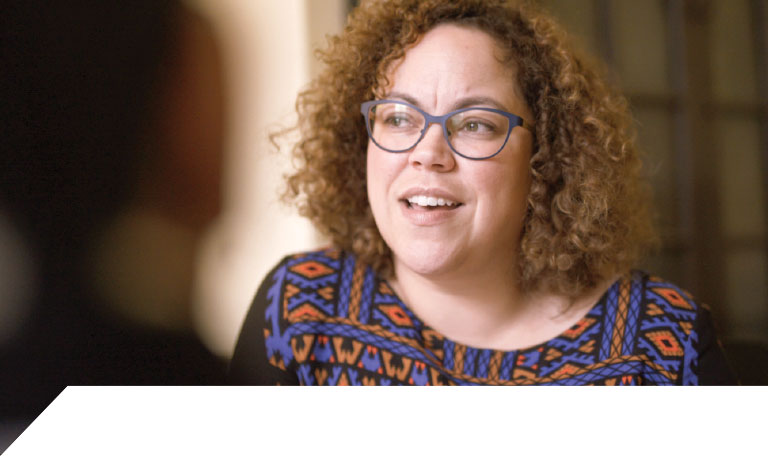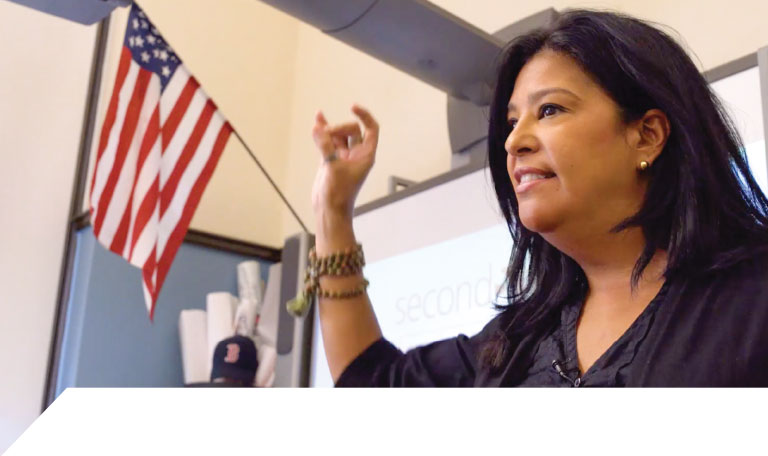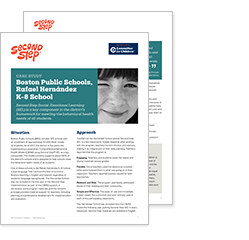Boston, MA
A Focus on Behavioral Health

It's been important to me as we shifted our practice in Boston Public Schools from reactive to preventative to really build up a model that I feel I have confidence in, that I feel like actually does really good things for kids.
Mary Zortman Cohen, Comprehensive Behavioral Health Model Coach
Boston Public Schools is a renowned urban public school system on a mission to support positive behavioral health for each and every student. The district is five years into a Comprehensive Behavioral Health Model (CBHM) roll-out to its 125 schools, which provides a tiered framework of interventions of support. As part of the CBHM, the district uses Second Step as its universal social-emotional learning program. The Rafael Hernández K–8 took on the challenge and is seeing results, from empowered teachers and a positive shift in student behaviors to schoolwide cultural change.
District Administrator

“The overall teacher response to Second Step has been a very positive one. We talk about it within our CBHM framework, that if kids aren’t ready to learn from a social-emotional perspective, they’re not really ready to learn from an academic perspective. It’s not a tough case to make and teachers get it.”
Mary Zortman Cohen,
Boston Public Schools
Principal

“When I think about Second Step and the work that it allows us to do to access learning, it really is about empowering children and students. And teachers are inspired by that.”
Ana Tavares,
The Hernández School
Grade 4 Teacher

“What itʼs done is itʼs given kids vocabulary; itʼs given me vocabulary to talk to the kids about feelings in ways that perhaps they didnʼt talk about them before. The conversations I have with them are super organic.”
Michelle Burgos,
The Hernández School
Case Study: Boston Public Schools and Rafael Hernández K–8 School
Situation
Boston Public Schools (BPS) includes 125 schools with an enrollment of approximately 57,000 PreK through twelfth-grade students. As of 2017, the district is five years into implementing a proprietary Comprehensive Behavioral Health Model (CBHM) using Second Step as a key component. The model currently supports about 50% of the district’s schools and is designed to help schools meet the behavioral health needs of all students.
One of these schools is the Rafael Hernández K–8 School, a dual-language Title 1 school (the first of its kind in Boston) teaching in English and Spanish regardless of students’ language backgrounds. Although the Hernández School was not included in the first year of the Second Step implementation as part of the CBHM support, it did receive some program materials, and the school’s principal provided material support for teachers, including planning and professional development to implement and evaluate it.
Approach
Teachers at the Hernández School piloted Second Step in a few classrooms. Though they were initially skeptical, teachers found the program intuitive and relevant as they worked with it, making it an integral part of their daily planning.
Teachers reported that the program was:
- Engaging. Teachers and students loved the videos and shared materials across grades.
- Flexible. Some teachers used the lessons as scripted, while some tailored them to what was going on in their classrooms. Teachers reported positive results for both approaches.
- Relevant and real. The program addressed issues in their building and their community.
- Simple and effective. The ease-of-use and immediate impact meant the curriculum was soon actively used in each of the participating classrooms.
The Hernández School was accepted into the CBHM model the following year, putting Second Step in every classroom. Second Step materials are available in English and Spanish, allowing greater student accessibility and the ability to reinforce skills development at home. The school was able to focus on creating best-in-class practices to support SEL, maximizing potential from the Second Step program.
The school’s administrative staff have structured professional development into three main foci, with Second Step at the core of the social-emotional support focus. This approach to professional development has created opportunities and provided support for teachers to share best practices for Second Step, promoting implementation fidelity and allowing thoughtful intervention planning for each classroom.
Outcomes
Boston’s CBHM schools are outperforming those that aren’t supported by the model. They have reductions in suspensions, better test scores, and more positive behavior. Additionally, students in CBHM schools are showing tremendous effect sizes for improvements in both internalizing and externalizing behaviors as measured by the Behavior Intervention Monitoring Assessment System (BIMAS).
The Hernández School uses restorative justice as a schoolwide Tier 1 and Tier 2 intervention, and Second Step is used as schoolwide Tier 1 SEL intervention as intended by CBHM. They’ve found the programs to be complementary and easy to use together.
Teachers at the Hernández School have been empowered to promote social-emotional development schoolwide and have a greater sense of self-efficacy for classroom management.
An examination of the data suggests that students and teachers are better able to communicate in part because of the common language the program creates. Students have developed a set of social and coping skills that are used and reinforced daily schoolwide, and the program allows them to build on these skills year over year.
